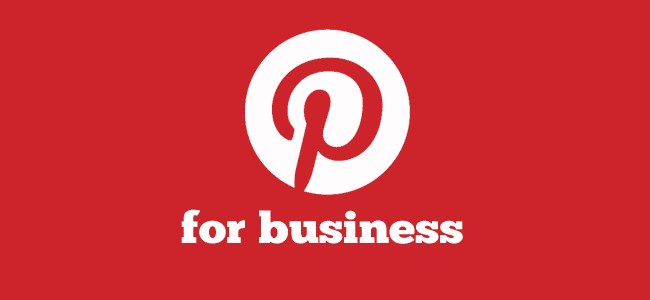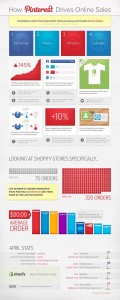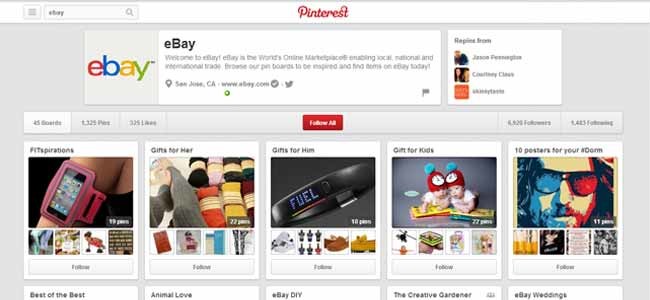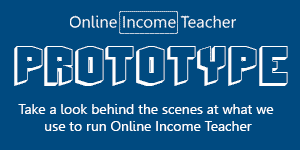
Pinterest is still relatively new on the scene, however it has been making huge waves online! One of the fastest growing sites in history, it has proved to be a successful social media site for people wanting to share pictures. What most people don’t know however is that Pinterest is a fantastic tool for businesses. We will look at how you can use Pinterest for business and help boost your eCommerce site.
“Pinterest has finally cracked the code and has the potential to become a true social commerce company.” – Josh Yang, Product Manager for ThredUp
Pinterest defines itself as a tool for collecting and organizing things you love. Founded by Ben Silbermann, Paul Sciarra, Evan Sharp and managed by Cold Brew Labs, Pinterest began as a social network where users can create ‘Pinboards’ of images. Launched in March 2010 as a closed beta, Pinterest has come a long way from just being a Pinboard style photo sharing site, to an eCommerce platform.
The usage of Pinterest has been a multipurpose one as its users come from diversified fields. For individuals, it is a site where they can ‘show and see’ images of their interest and buy stuff they like by taking a look at their images. Educational groups and scholars pin images and sites for reference at a later time. Companies create business Pinboards to promote their business online. Even the US presidential Campaign landed its foot on Pinterest when the best ladies of both the candidates created their Pinterest accounts in 2012.
Over its evolution, Pinterest is now a promising platform for marketing for retail companies and marketing strategists. Lisa Suttora, an eCommerce strategist says:
Pinterest has rapidly become one of the best ways to:
- 1. Show the world what you sell
- 2. Direct potential new customers directly over to the product you are selling.
- 3. Show case products in an environment that lends itself perfectly to eCommerce.
The Rise Of Pinterest
Pinterest was named the ‘Best New Startup of 2011’ by TechCrunch. Pinterest is based on visual marketing which caters to the fact that 65% of the world’s population consists of visual learners. Visual appeal has a much bigger impact than plain text, which is why Pinterest’s image-only format significantly appeals to the viewers’ interests.
ComScorereported 11.7 million users on Pinterest in January 2012, making it the fastestsite in history to cross the 10 million mile stone! 50% of the activity on Pinterest is consumer products related. An eCommerce pinboard acts like a virtual storefront for visitors. ‘Repining’ an image enables more and more potential customers to see the product and visit its page as pinned images take users directly to the store or product page. Thus these pins may go viral converting a significant fraction of potential customers to sales leads. According to Shareaholic, Pinterest brought more traffic to retailers in December 2011, than LinkedIn, Google+ and Youtube. In 2012, it just went past through twitter.
Besides, an image of a product on Pinterest is free advertising. The average cost per order of Pinterest is twice than that of Facebook!

Pinterest For Business
In order to enhance its functionality for businesses, Pinterest recently introduced a new feature called rich pins. These pins include price of the commodity, its availability, intriguing details and a direct link to the product page. An interested user can take a look at the pinned image and directly visit the product page to buy the item. These pins have proven to be extremely successful as they provide an easier way for customers to shop. It’s a great way to convert interest to action. Here is the detailed information on how to create rich pins.
eCommerce and retail companies work out various strategies to promote their businesses through Pinterest. Here are a few tips that you can use:
- The first and foremost prerequisite to attract potential customers is the quality of images. Professional images have always been a centre of attraction and interest.
- Marketers that use price tags with their pins (as above infographic shows) get 36% more likes than those without.
- Watermarks have become an effective tool for sites to get their due credit, even if the same image has been pinned from an unauthorized source.
- ‘Michaels’, the art and craft store, used a creative technique of using the image description to a great advantage. Every image on their pinboards have a beautiful description of the story behind it which makes visitor’s reading experience enjoyable. Thus a good image description can attract more visitors to the store.
- Since these pins lead them to the store, the landing page must be optimized as it would enhance the visitor’s experience.
- Bringing eCommerce marketing closer to the realistic one, images referring to positive customer service feedback can also be pinned.
- Tagging people wisely and liking the images that support your brand is also a helpful activity that helps making up online reputation.
- A great deal of products can also be introduced as the majority of users are females.
- Declaring seasonal promotions and discounts on product images has driven greater customer traffic to the businesses.
- Make effective use of the rich pins feature.

Pinterest has changed the browsing experience to a more visual experience. All the statistics point towards Pinterest being a powerhouse, ideal for eCommerce. Multi-million dollar companies like Amazon, eBay, Wayfair, etc. opening up on Pinterest proves that there lies a great scope for eCommerce businesses to grow and expand through this platform. So, if you are thinking about growing your eCommerce business, Pinterest should be part of your marketing strategy.
Do you use Pinterest for business (whether eCommerce or not)? Do you use Pinterest as a consumer? If so, how do you find the whole experience? Please let us know in the comment section below.

CommentLuv vs Disqus – Why I Don’t Use CommentLuv!